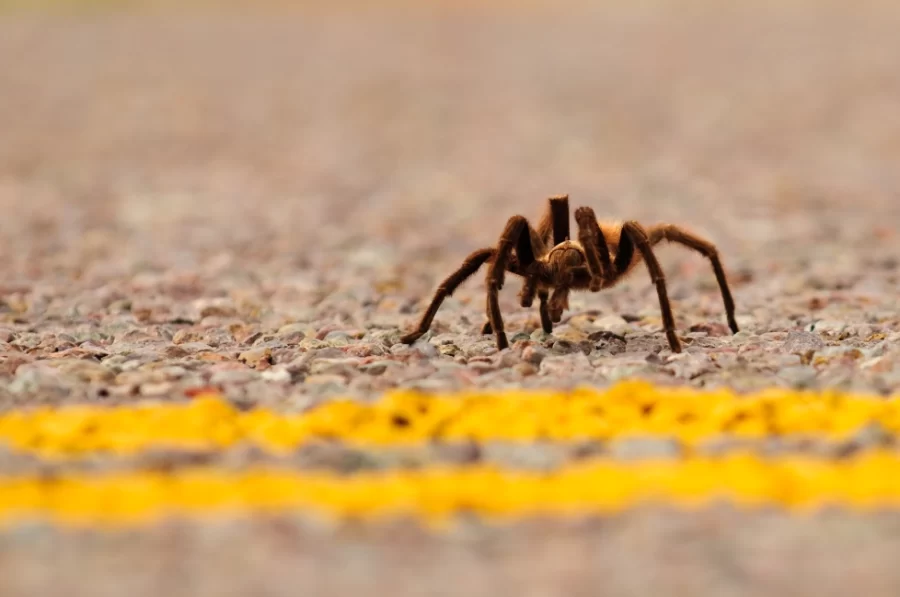Colorado’s Annual Tarantula Migration Has Begun
August 31, 2022
Once a year, Colorado experiences what is now known as its Tarantula Migration. The natural event happens primarily in the southeastern section of the state, according to Colorado Parks & Wildlife, located in Comanche National Grasslands near the town La Junta.
The Tarantula Migration isn’t actually a migration at all, but a “walkabout.” A walkabout is the time period when sexually matured male tarantulas come out from their burrows looking for females with whom to reproduce.
The local Texas brown tarantula activity spikes during mid-to-late September when the weather cools and the sun sets sooner. As tarantulas are cold-blooded animals, they settle back down in early-to-mid October before the snow sets in.
While the female tarantulas will remain underground in their burrows, the male tarantulas use touch and vibrations to find said females. For most males, this is the end of their life, as they lose interest in food once reaching sexual maturity and have a high chance of being eaten by the female during or after mating.
For those who are scared of tarantulas or any arachnid, taking the chance to see this “migration” happen in person could be a good step toward lessening their fears. These tarantulas, though active, won’t attack a human unless actively provoked, and can be fascinating to watch in action in the wild when they’re most mobile.
If you’re planning on visiting Colorado to see the migration, there are a few things to remember in order to keep both you and the animals away from harm:
1) Do not pick up any tarantulas you might find. Some can find it threatening and attempt to bite. Tarantulas are also very delicate animals, so it’s extremely easy to hurt or kill one without ever noticing.
2) Research the specific area you want to visit. This can give you a good idea on common sighting locations and if there are any other species in that area.
3) Be careful when stepping around bushes and high grass. This is a common terrain for any species of tarantula that naturally live in the Colorado plains.
Visit the Colorado Fish & Wildlife page here to learn more about tarantulas and their yearly walkabout.


